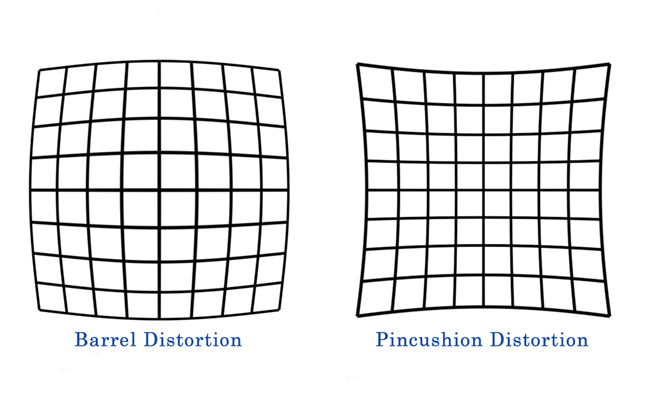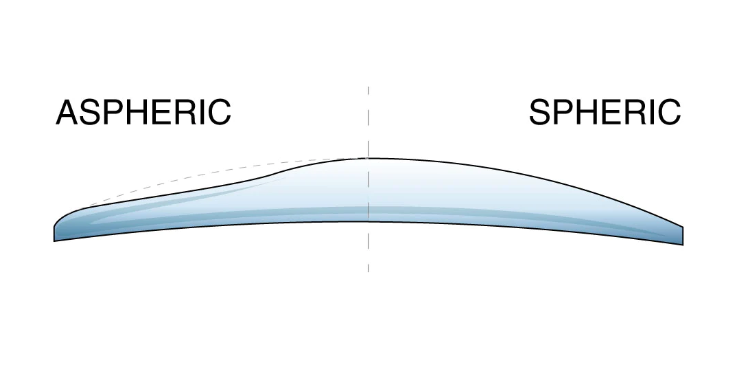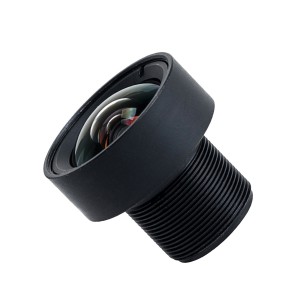- Home
- News
- What is Lens Distortion in Photograph? What is Wide Angle Low Distortion Lens? What is the Main Applications of M12 Low Distortion Lens?
What is Lens Distortion in Photograph? What is Wide Angle Low Distortion Lens? What is the Main Applications of M12 Low Distortion Lens?
一、What is lens distortion in Photograph?
Lens distortion in photography refers to the optical aberrations that occur when a camera lens fails to accurately reproduce the image of the subject being photographed. This results in a distorted image that is either stretched or compressed, depending on the type of distortion. There are two main types of lens distortion: barrel distortion and pincushion distortion.
Barrel distortion occurs when straight lines near the edges of the image appear to curve outward, creating a bulging effect. Pincushion distortion, on the other hand, occurs when straight lines near the edges of the image appear to curve inward, creating a pinched effect.
Lens distortion can occur due to various factors such as the design and construction of the lens, the angle of view, and the distance between the camera and the subject. The degree of distortion can vary depending on the specific lens being used and the settings used by the photographer.
Fortunately, lens distortion can often be corrected through post-processing techniques or by using specialized software designed to correct lens distortion. However, it’s always best to minimize lens distortion by using high-quality lenses and carefully framing your shots to avoid excessive distortion.
二、The difference in distortion between aspherical lenses and spherical lenses.
Aspherical lenses and spherical lenses are types of optical lenses that are used in cameras, telescopes, microscopes, and other optical instruments.
Spherical lenses have a curved surface that is shaped like a segment of a sphere, and are the most common type of lens. However, they can introduce optical aberrations such as spherical aberration, coma, and distortion, particularly when used at large apertures or in wide-angle lenses.
Aspherical lenses, on the other hand, have a non-spherical surface that is designed to correct for these aberrations. This allows for sharper images with better contrast and reduced distortion, particularly at the edges of the frame. Aspherical lenses are often used in high-end lenses, and can be found in both prime and zoom lenses.
Overall, the use of aspherical lenses can help to improve the optical performance of a lens, particularly in terms of reducing distortion and other aberrations. However, aspherical lenses are typically more expensive to manufacture than spherical lenses, which can make them more expensive for consumers.
三、What is wide angle low distortion lens?
A wide-angle low distortion lens is a type of camera lens that allows for a wider field of view than a standard lens while minimizing or eliminating the distortion that can occur with wide-angle lenses.
Wide-angle lenses have a shorter focal length than standard lenses and can capture more of a scene in a single frame, making them popular for landscape, architecture, and interior photography. However, because of the wide angle of view, they can also produce distortion, which can result in straight lines appearing curved or objects appearing stretched or distorted.
Low distortion wide-angle lenses are designed to minimize or eliminate this distortion, allowing for more accurate and realistic representation of the scene. These lenses are typically used by professional photographers who require a wider field of view without compromising image quality or accuracy.
四、What is the main applications of M12 low distortion lens?
The M12 low distortion lens is commonly used in machine vision and computer vision applications, particularly in cameras and imaging systems that require high-quality images with minimal distortion. Here are some of the main applications of M12 low distortion lenses:
Industrial Automation: M12 low distortion lenses are used in industrial automation systems to capture clear and accurate images of objects in manufacturing processes.
Robotics: Robotics applications often use M12 low distortion lenses for visual sensing and guidance systems that require high precision and accuracy.
Security and Surveillance: M12 low distortion lenses are commonly used in security cameras and surveillance systems to capture clear and accurate images of people and objects.
Medical Imaging: M12 low distortion lenses are also used in medical imaging systems for diagnostic and research purposes.
Automotive: M12 low distortion lenses are used in advanced driver assistance systems (ADAS) for vehicles, such as lane departure warning systems and collision avoidance systems.
Overall, the M12 low distortion lens is a versatile tool for any application that requires high-quality imaging with minimal distortion.


